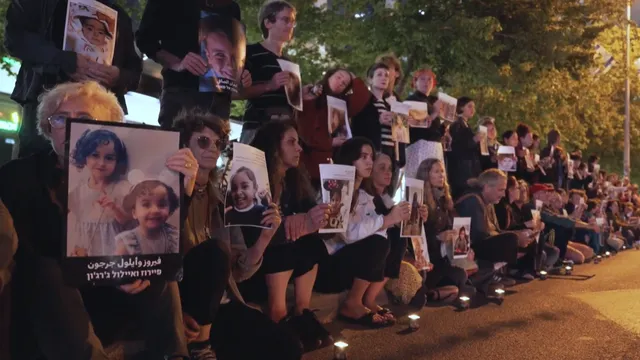
Surgeon exposes horror experienced by children in Gaza conflict
2025-06-04 23:42- Dr. Feroze Sidhwa shared his experiences working in Gaza as a trauma surgeon during a briefing at the United Nations.
- He expressed disappointment over the U.S. veto of a UN resolution calling for a cease-fire, stressing the impact on children.
- Sidhwa advocates for a peaceful resolution to the conflict to protect children, who are suffering most from the ongoing violence.
Express your sentiment!
Insights
In recent times, the humanitarian crisis in Gaza has garnered international attention, with civilians bearing the brunt of the ongoing conflict. Dr. Feroze Sidhwa, a trauma surgeon based in Stockton, California, has visited Gaza twice to assist in treating patients in a war-torn environment. His account from the Gaza Strip reveals harrowing experiences while working in a makeshift hospital, where he witnessed innocent children suffering due to the violence. During a briefing to the United Nations Security Council in late May, Dr. Sidhwa expressed deep concern over the plight of children, emphasizing that many are living in despair and facing severe psychological distress. Dr. Sidhwa articulated his disappointment with the United States’ veto of a UN resolution demanding a cease-fire, suggesting that the decision not only endangers lives but perpetuates a cycle of violence affecting the most vulnerable populations—children. He noted that reports indicate nearly half of Gaza's children are suicidal, which underscores the severity of the psychological trauma inflicted by continuous violence. The horror witnessed firsthand by Dr. Sidhwa included instances of severe injuries among children, which left him shaken, stating that such sights are incomprehensible to those not accustomed to war. Both in Israel and abroad, a growing minority of individuals is calling for an end to the violence and for actions that protect civilians, particularly children. In Israel, there have been protests led by left-wing activists against the IDF's military operations that resumed following the breakdown of a ceasefire earlier this year. These activists highlight the suffering of Gazan civilians and aim to bring attention to their plight amidst the ongoing conflict. The situation is fraught with tension, as many regular Israeli citizens do not resonate with these movements, viewing them as less patriotic or supportive of national security. Overall, Dr. Sidhwa's experiences as a trauma surgeon serve as haunting reminders of the costs of conflict, particularly the vulnerabilities faced by children caught in the crossfire. He is committed to continuing his advocacy for peace and the protection of civilians, particularly the innocent children who bear the greatest burden in times of war. There is a widespread acknowledgment that this war has lasted far too long and has inflicted deep psychological scars on the population, threatening the future of an entire generation.
Contexts
The history of protests against Israeli military actions in Gaza has been marked by significant public expression both within the region and globally. Protests have often stemmed from periods of escalated violence and military operations, particularly during the conflicts that erupted in 2008-2009, 2012, 2014, and the ongoing skirmishes that challenge the humanitarian landscape of Gaza. These moments of crisis have mobilized diverse groups worldwide, from grassroots organizations advocating for Palestinian rights to larger coalitions that encompass various political, cultural, and civil society interests. The protests are typically characterized by marches, sit-ins, and public demonstrations that call attention to the humanitarian impact of military actions in Gaza, stressing the toll on civilians, infrastructure, and human rights within the besieged enclave. In 2008-2009, the Israeli military operation known as "Operation Cast Lead" triggered intense international demonstrations. Activists galvanized public opinion by highlighting civilian casualties and drawing attention to the already dire conditions in Gaza due to the economic blockade. Cities across Europe, North America, and the Middle East witnessed large-scale protests, which often featured calls for an end to Israeli airstrikes, advocacy for humanitarian aid, and demands for a shift in foreign policy towards Israel. These protests reflected a growing awareness and outrage regarding the challenges faced by Gazans, as advocacy groups pushed for a review of arms sales to Israel from various Western nations, particularly the United States and the United Kingdom. The subsequent cycles of violence in 2012, during "Operation Pillar of Defense," and in 2014 during "Operation Protective Edge," saw an escalation of protest activities both online and offline. The emergence of social media platforms facilitated a new era of activism where images and reports of violence could be disseminated rapidly, thus rallying supporters globally in real-time. Universities, particularly in the United States and Europe, became hotbeds of protest activity, where students organized events to raise awareness and express solidarity with Gazans, alongside calls for Boycott, Divestment, and Sanctions (BDS) movements aimed at Israel. The protests highlighted not just the immediate violence but also longer-term questions of systemic injustice, displacement, and the need for sustainable solutions in the Israeli-Palestinian conflict. More recently, the ongoing tensions within Gaza have continued to provoke protests and expressions of solidarity on a global scale. The 2021 escalation of violence following tensions in East Jerusalem reignited fervent protests across cities worldwide, re-energizing discussions about the rights of Palestinians and the implications of military actions. In many instances, protests have also aligned with broader social movements such as Black Lives Matter, emphasizing intersections in struggles for justice. This convergence highlights a growing recognition of the interconnectedness of global issues related to colonial legacies, race, and systemic oppression. As military actions in Gaza persist, the tradition of protest appears to remain a vital channel through which voices advocating for peace, justice, and accountability will continue to resonate internationally.